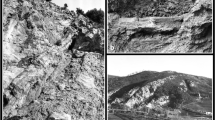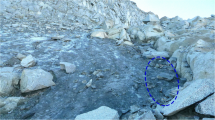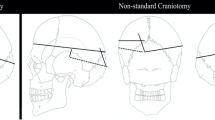Abstract
The presence of autopsy marks in human skeletal remains indicates a medicolegal procedure related to ascertaining the cause and manner of death. We present here four cases where signs of autopsy were observed in the remains recovered from mass graves and cemeteries of prisoners from the Spanish Civil War (1936–1939), victims of extrajudicial executions, and of death in prison, respectively. With respect to the former, historical evidence indicate that during the first weeks after the coup, official removal of cadavers and autopsy procedures were carried out to the first victims of extrajudicial killings, whose corpses were found abandoned in the road. Once the civil war was established and systematic extrajudicial killings were systematic, official military orders were issued to stop standard forensic proceedings. Therefore, autopsy marks observed in the remains exhumed from mass graves located in cemeteries may be indicative of an earlier chronology of the killings, and this information proved to be relevant for the identification process in one of the cases presented. In a cemetery of political prisoners, autopsy signs were also observed in two skeletal remains and in the official records of two prisoners, a corroboration of information also relevant for the identification process. These findings indicate that autopsy marks can be found in the remains of victims of human rights violations exhumed from cemeteries. Skeletal and archival information could be useful for the identification process in other cases of large-scale violence, where the first victims of extrajudicial executions were buried unidentified in cemeteries after autopsy procedures.


Similar content being viewed by others
Notes
This information comes from Dr. Claudia Garrido (Special Unit of Forensic Identification, Forensic Service of Chile) and from the senior author (F.E.), who has been called as an international forensic expert by the Chilean Government to collaborate in diverse cases related to the identification and determination of the cause and manner of death of victims of the Pinochet's dictatorship.
References
Juliá S (1999) Víctimas de la Guerra Civil. Editorial Temas de Hoy, Madrid
Preston P (2012) El Holocausto español. Editorial Debate, Madrid
Ríos L, Casado JI, Puente J (2010) Identification process in mass graves from the Spanish Civil War I. Forensic Sci Int 199:e27–e36
Ríos L, García-Rubio A, Martínez B, Alonso A, Puente J (2012) Identification process in mass graves from the Spanish Civil War II. Forensic Sci Int 219:e4–e9
Etxeberria F, Herrasti L, Pérez de la Iglesia L, Albisu C, Jiménez J, Cardoso S, Baeta M, Nuñez C, Palencia L, Martínez de Pancorbo M (2012) Exhumación, identificación y causa de muerte en la fosa común de AIbra-Oibar (Navarra). Munibe 63:367–377
Casanova J (1992) El pasado oculto. Fascismo y violencia en Aragón, 1936–1939. Editores Mira, Zaragoza
Ruiz MJ, Berrio JC, Esparza J (2003) Navarra 1936: de la esperanza al terror. Altaffaylla Kultur Taldea, Tafalla
García Colmenares P (2008) ¡Queríamos matarlos! Historia y memoria de las víctimas de la represión franquista enterradas en la ciudad de Palencia (1936–1945). Ayuntamiento de la Ciudad de Palencia, Palencia
Rios L, García-Rubio A, Martínez B, Herrasti L, Etxeberria F (2013) Patterns of perimortem trauma in skeletons recovered from mass graves from the Spanish Civil War (1936–1939). In: Smith MJ, Knüsel C (eds) The Routledge Handbook of the Bioarchaeology of Human Conflict. Routledge, Oxford, in press
Espinosa F (2012) La represión franquista. Las circunstancias de la muerte. Boletin Galego de Medicina Legal e Forense 18:47–54
Fontana J (1986) España bajo el franquismo. Editorial Crítica, Barcelona
Ruíz Vilaplana A (2012) Doy fe… Un año de actuación en la España nacionalista. Espuela de Plaza, Sevilla
Amadasi A, Borgonovo S, Brandone A, Di Giancamillo M, Cattaneo C (2012) The survival of metallic residues from gunshot wounds in cremated bone: a radiological study. Int J Legal Med 126:363–369
Amadasi A, Brandone A, Rizzi A, Mazzarelli D, Cattaneo C (2012) The survival of metallic residues from gunshot wounds in cremated bone: a SEM-EDX study. Int J Legal Med 126:525–531
Eliopoulos C, Moraitis K, Reyes F, Spiliopoulou C, Manolis S (2011) Guidelines for the recognition of cemetery remains in Greece. Am J Forensic Med Pathol 32(2):153–156
Berryman HE, Bass WM, Symes SA, Smith OC (1991) Recognition of cemetery remains in the forensic setting. J Forensic Sci 36:230–237
Rogers TL (2005) Recognition of cemetery remains in a forensic context. J Forensic Sci 50:1–7
Guberek T, Guzmán D, Vejarano B (2010) Using cemetery information in the search for the disappeared: lessons from a pilot study in Rionegro, Antioquia. In: EQUITAS (ed) Methodological Proposals for Documenting and Searching for Missing Persons in Colombia. EQUITAS, Bogota, pp 19–29
Acknowledgments
The authors would like to thank the families for the trust deposited in our team and the patience along the identification process. We also would like to thank Manuel Monge for his help in the archival research in the case of La Carcavilla. Dr. Claudia Garrido kindly agreed to share her experience in the Chilean case. This research is part of the project financed by the Ministry of Economy and Competitiveness CSO2012-32709.
Author information
Authors and Affiliations
Corresponding author
Rights and permissions
About this article
Cite this article
Ríos, L., Martínez, B., García-Rubio, A. et al. Marks of autopsy and identification of victims of human rights violations exhumed from cemeteries: the case of the Spanish Civil War (1936–1939). Int J Legal Med 128, 889–895 (2014). https://doi.org/10.1007/s00414-013-0896-6
Received:
Accepted:
Published:
Issue Date:
DOI: https://doi.org/10.1007/s00414-013-0896-6




